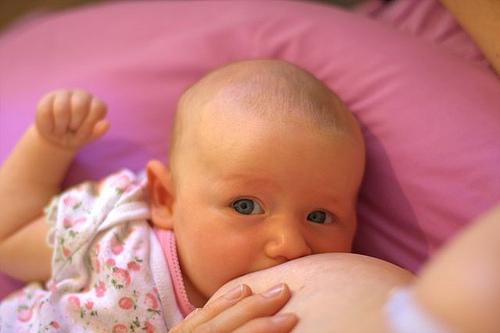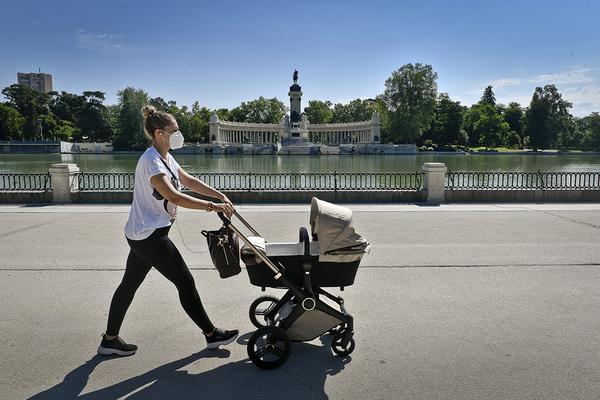Nursing leave: conditions and ways to enjoy it 84 Comments
The World Health Organization recommends exclusively breastfeeding babies for the first six months of life and continuing to breastfeed along with other foods for up to two years.
As maternity leave (now called leave for the birth of a child) is only 16 weeks, the law contemplated a nursing leave for the mother until the baby was 9 months old, which until April 2019 that she could only enjoy one of the parents . In principle, the nursing permit corresponded to the mother who worked and she could transfer it to the father.
Both parents can enjoy breastfeeding leave at the same time
Royal Decree-Law 6/2019, of March 1, on urgent measures to guarantee equal treatment and opportunities between women and men in employment and occupation transformed the nursing permit into a permit for infant care ,which both parents can enjoy at the same time (or separately) (although if both parents work in the same company, the management could limit the simultaneous enjoyment for justified reasons of operation of the company, which will have to communicate in writing), and introduced other changes in the way of enjoying the permit.
1 How you can enjoy breastfeeding leave
- 1. An hour off in the middle of the day
Both parents are entitled to one hour of absence from work to care for the infant until the infant is nine months old. This hour of absence can be divided into two half-hour fractions within the working day.
1. 2. A reduction of half an hour of the dayThe time of leave can be changed for a reduction of half an hour at the entrance or exit. That is, you can take an hour or two half hours in the middle of the day, or enter or leave half an hour later.

Most parents tend to opt for this option, because the time off in the middle of the day only works when you live close to work or someone can bring the baby to nurse during that time.
1. 3. Accumulate breastfeeding leave in full days
The law also contemplates the possibility of agreeing with the company to accumulate breastfeeding time in full days, in the terms provided in the collective bargaining or in the agreement reached with the company, respecting, where appropriate, what is established in the former.In May 2018, the Social Chamber 4 of the Superior Court of Justice confirmed the right to accumulate breastfeeding in full days based on the hour of rest and not the option of half an hour of reducing the day.
2. Special cases: reduced working hours, multiple births…
2.1 Nursing leave is the same with reduced working hours
Workers with reduced working hours for child care can also enjoy nursing leave under the same conditions as other workers. That is, reduce your working day by half an hour or take an hour off in between until the baby is 9 months old (or 12 if they decide to extend it with a salary reduction).
2.2 Double breastfeeding permit if the mother has twins or fraternal twins
As was the case with nursing leave, the duration of the leave is increased proportionally for adoption, custody for the purpose of adoption or multiple birth fostering. That is, if two children are born, the parents can be absent for two hours.
3. The permit can be extended up to 12 months if both parents maintain it
The law contemplates that when both parents, adopters, guardians or foster parents exercise this right with the same duration and regime, the leave can be extended from 9 to 12 months of the baby's life, with a proportional reduction in salary and that to complement the reduction of salary, you can request a benefit from the INSS for jointly responsible for the care of the infant, which consists of a daily subsidy equivalent to 100% of the regulatory base established for the temporary disability benefit in proportion to the reduction in the working day . The requirement to be able to request the benefit is that both parents reduce their working hours equally to care for the infant, but the benefit is only granted to one of them. You can get more information on this Social Security page. However, some collective agreements extend the right to leave (without salary reduction) until the child is one year old.The right to breastfeeding leave is included in article 37.4 of the Workers' Statute
4. How to apply for breastfeeding permission
As occurs with the reduction of working hours, the worker has the right to decide the time in which he takes the nursing leave.
5. Breastfeeding risk
When the job poses some risk to the nursing mother or to the baby who drinks breast milk, for example due to exposure to chemical agents during the working day, the employer must relocate the worker to another job where there are no risks of any kind until the end of the nursing leave.
If this is not possible, the contract is suspended until the baby is 9 months old and the mother receives a benefit for risk during lactation, equivalent to 100% of the regulatory base (the same as in maternity leave).
This right is included in the Workers' Statute and the Equality Law. In addition, the Court of Justice of the European Union has recently ruled that breastfeeding must have the same protection as pregnancy at work, that is, the administration and companies must equally protect pregnant workers and those who are giving birth. breast her children.
In addition, an EU lawyer has also said that working at night can pose a risk to breastfeeding.
6. Dismissal during nursing leave is null
Dismissal during nursing leave or low risk during breastfeeding is considered null. In this case, the worker can choose between economic compensation of 45 days per year worked or return to her job.
Photo by shingleback







